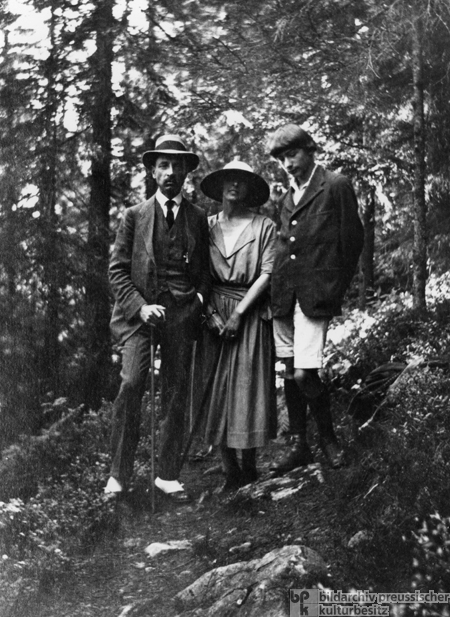













INTRODUCTION | DOCUMENTS | IMAGES | MAPS | EDITOR
|
Rainer Maria Rilke (1875-1926), is widely regarded as one of the most significant poets in the German language. The themes of transience and transformation which he explored in his poetry mirrored his peripatetic life, which spanned the decades of upheaval and change from the belle époche, through World War I, to the Weimar Republic. Throughout, he cultivated and was supported by a network of relationships and friendships from social luminaries and aristocratic patrons such as Princess von Thurn und Taxis and Harry Count Kessler, to prominent intellectuals such as Hugo von Hofmansthal, Paul Valéry, Stefan Zweig and Andre Gide. He spent most of the war years in Munich and left in 1919 after the overthrow of the Bavarian Soviet Republic, which he had supported. The photograph shows him with the painter, Elisabeth Dorothée (Baladine) Klossowska, whom he met shortly after his departure from Munich. She would remain a significant figure in his life. He would also remain close with and sponsor her son, Balthasar, who would become known as the painter Balthus (1908-2001).
© Bildarchiv Preußischer Kulturbesitz |
 print version
print version return to image list
return to image list previous image
previous image
